With remote work on the rise, traditional office arrangements have been completely turned upside down. No one has embraced this transformation quite like remote professionals in India. From freelancers to full-time remote employees, Indian professionals are leveraging a range of creative communication hacks to collaborate with global teams, navigate time zone differences, and remain productive. Whether you’re a remote worker yourself or just interested in how India’s professionals are coping with this new status quo, there’s plenty to be learned from their approach.
Remote work relies on one thing above all else: clear, constant communication. This often means leveraging technology, cultural adaptability, and practical solutions to ensure professionals stay connected and deliver the necessary results.
Here are some of the most powerful communication tactics they’ve perfected — and why they’re useful for anyone in the remote game.
1. Streamlining communication with digital tools
For remote workers in India, digital tools are the backbone of effective communication. From project management platforms, including Trello and Asana, to messaging apps like Slack or WhatsApp, using the right tools helps keep conversations, deadlines and deliverables moving. One surprising hero in this toolkit is the humble PDF converter.
With a PDF converter, professionals can annotate documents, compress files for easier sharing, and keep everything streamlined. It’s an underrated gem for workers who need to consolidate information, send polished reports, or share editable documents in a universally readable format.
For instance, instead of dealing with compatibility issues when sharing Word files, a PDF converter allows workers to create sleek, professional documents for any device. This little powerhouse is a game-changer, and your secret weapon for making sure presentations, proposals, and updates stay accessible for global teams.
Beyond just creating PDFs, these tools help eliminate confusion. A client in New York might want a proposal, while a colleague in Singapore is requesting edits to the same file. Such tools can be a boon for Indian remote workers, navigating a plethora of expectations in different time zones.
2. Mastering the art of asynchronous communication
When you’re collaborating across several time zones, immediate responses aren’t always realistic — or even necessary. Indian remote professionals have become pros at mastering asynchronous communication, which allows team members to work at their own pace without being chained to their inboxes.
One of the key elements of this strategy is providing detailed updates that leave no room for ambiguity. For example, rather than sending a vague “Let me know your thoughts,” a typical email might include clear action points, a timeline, and links to relevant files. In this way, coworkers or clients can seamlessly pick up where the person who sent the message left off, even if that person is responding once they’re offline.
Asynchronous communication also leans heavily on documentation. Note templates, video recordings, and thorough project briefs are crucial. These enable team members in different time zones to catch up without backtracking or losing precious time in unnecessary calls. For Indian remote workers — who frequently work odd hours to be in sync with international teams — this approach helps maintain a healthy balance and keeps productivity from dipping.
3. Navigating cultural nuances
Communication doesn’t only consist of words — it also comprises a nuanced understanding of cultural differences, and Indian professionals have honed this skill while working with diverse teams around the world. For example, although directness is valued in American business culture, European co-workers may appreciate a more nuanced or diplomatic communication style.
Indian remote workers are especially good at reading the room — or rather, the email thread. They adjust tone and message style to match the recipient’s cultural expectations. Making small tweaks like using polite phrasing in a British co-worker’s email or providing context for a US-based client can go a long way.
This cultural adaptability also extends to meetings. Indian remote workers often make it a point to keep expectations clear and confirm details to avoid unnecessary miscommunication. This helps keep everyone on the same page in a multicultural remote work environment regardless of culture, ethnicity, or work style.
4. Leveraging effective video communication
Without an in-person connection to rely on, video calls have become a staple for remote workers. Indian professionals are careful about making these interactions as impactful as possible. Rather than relying on endless Zoom calls, they focus on making meetings concise and action-oriented.
A typical strategy involves preparing an agenda and sharing it with participants, so everyone is prepared for the call by reading relevant documents beforehand, saving time, and keeping discussions on track. But that’s just half the battle. Many Indian remote professionals also embrace non-verbal communication during video calls, like nodding to show engagement or maintaining eye contact to build rapport.
At the same time, they’re mindful of video conferencing fatigue. Not everything needs a meeting, so instead email updates or voice messages are used as alternatives. By focusing on efficiency, they facilitate collaboration without wasting time.
5. Building trust through consistency
Trust is a cornerstone of successful remote work, and Indian professionals have nailed the art of building it through consistent communication. This usually begins with reliability — answering emails promptly, hitting deadlines, and being honest about work in progress.
One handy tactic is status updates. Whether it’s a quick Slack message or a weekly email, these updates communicate exactly where a project is at. This develops trust and reduces the need for check-ins.
Consistency also extends to tone and professionalism. Indian remote workers ensure their communication is respectful and well-structured, whether in a casual conversation with a teammate or presenting to a client. This steadfast, dependable demeanour offers assurance to colleagues and clients that they’re in good hands.
6. Staying adaptable amidst change
The remote work landscape is constantly evolving, and Indian professionals are nothing if not adaptable. Flexible tactics, from implementing new collaboration software, changing workflows, and adapting to evolving client demands, are an integral part of communication strategy.
This adaptability is especially crucial during crises. For example, during the initial wave of the COVID-19 pandemic, thousands of businesses suffered. Indian remote workers were able to rapidly transition to new forms of communication, like team-based apps such as Microsoft Teams or flexible work hours to accommodate colleagues in other regions.
Being adaptable doesn’t just mean keeping up with trends. It’s just as much about staying open to feedback and continuously improving. Indian remote professionals are always seeking to communicate better, whether it’s through training sessions, online courses, or simply observing what works best.
Closing thoughts
Indian remote professionals are proving that great communication isn’t just about the tools you use, but rather showing up for your team, no matter the distance. Whether it’s creating polished documents with a PDF converter, managing time zones like a pro, or building trust through small, consistent actions, they’ve cracked the code for staying connected in a disconnected world.
So, whether you’re working from a quaint cafe in Mumbai or collaborating with a team across the globe, these expert strategies prove that great communication is the key to success no matter where you log in from!
- 17672 reads




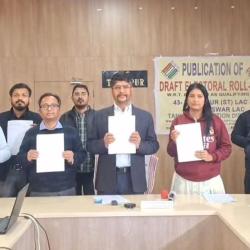
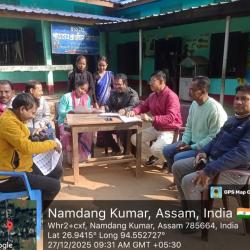
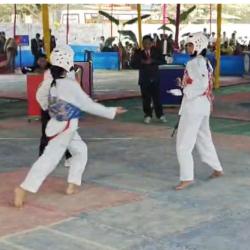
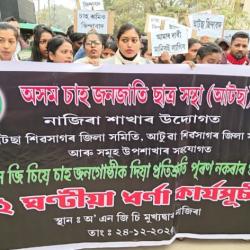
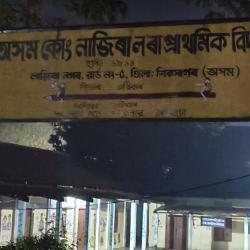

Add new comment